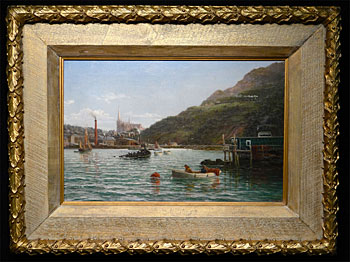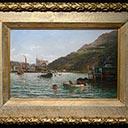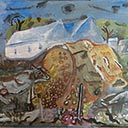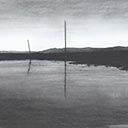Port Chalmers
29 x 45 cm
est. $15,000 - 20,000
Reference:
Port Chalmers was originally named Koputai by Kai Tahu, the local Iwi. In the early 19th century it was an important trading port for sealers and whalers. By the 1860s, with the advent of the Otago gold rush, Port Chalmers became the third largest port in Australasia.
Gibb captures the industrial development of New Zealand's leading port at the time. Overlooking the shipbuilding and storage facilities is the Iona Presbyterian Church re-built in 1883. In 1873 railway revolutionised the transportation of goods between Dunedin and Port Chalmers. April 1878 saw the opening of the Dunedin to Christchurch line. This steam train can be seen in the hills top right en route north to Christchurch. In the foreground right is the old green cabin which features in early post card views of the area. This is a rare and detailed depiction of early Port Chalmers.
Scottish born John Gibb began exhibiting at the Royal Scottish Academy in 1861and by 1868 at the more progressive Royal Glasgow Institute of Fine Arts. In 1876 he emigrated to New Zealand with his family, arriving in Canterbury in September, 1876. Within three months of his arrival he purchased land on the corner of Barbadoes and Worcester Streets, Christchurch where he established a studio. He gave lessons, exhibited at the Otago Society of Art and was a founding member of the Canterbury Society of Arts formed in 1880. Gibb exhibited in Auckland and Wellington as well as many inter-colonial exhibitions beyond New Zealand. By the 1880s Gibb was acknowledged as New Zealand's foremost marine artist.
View pages from catalogue that relate to this lot PDF (200KB)





